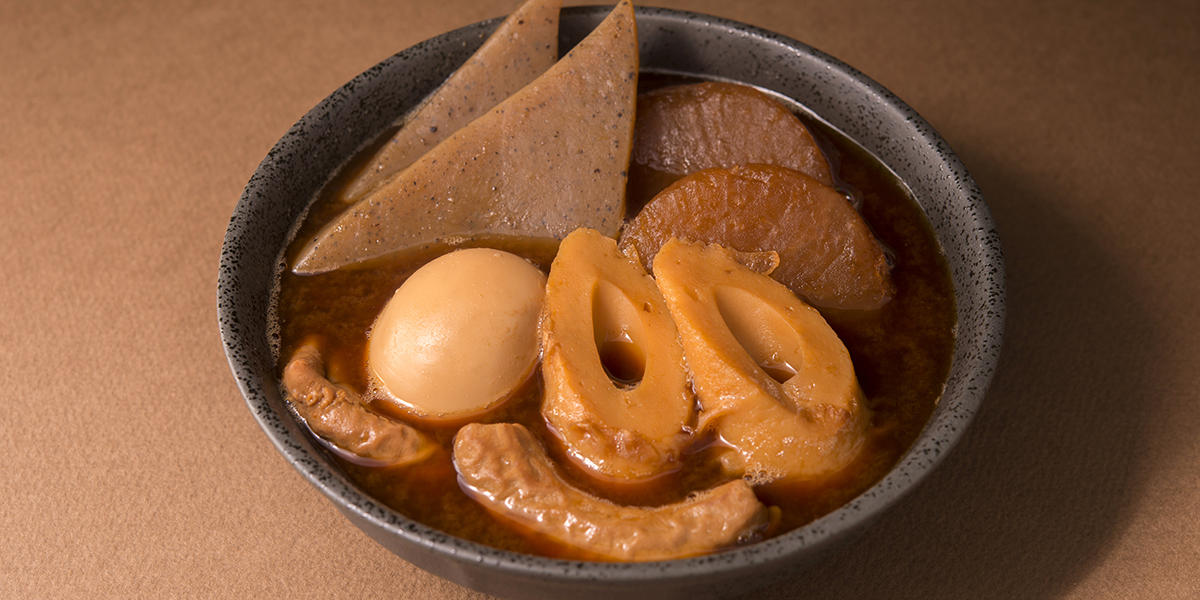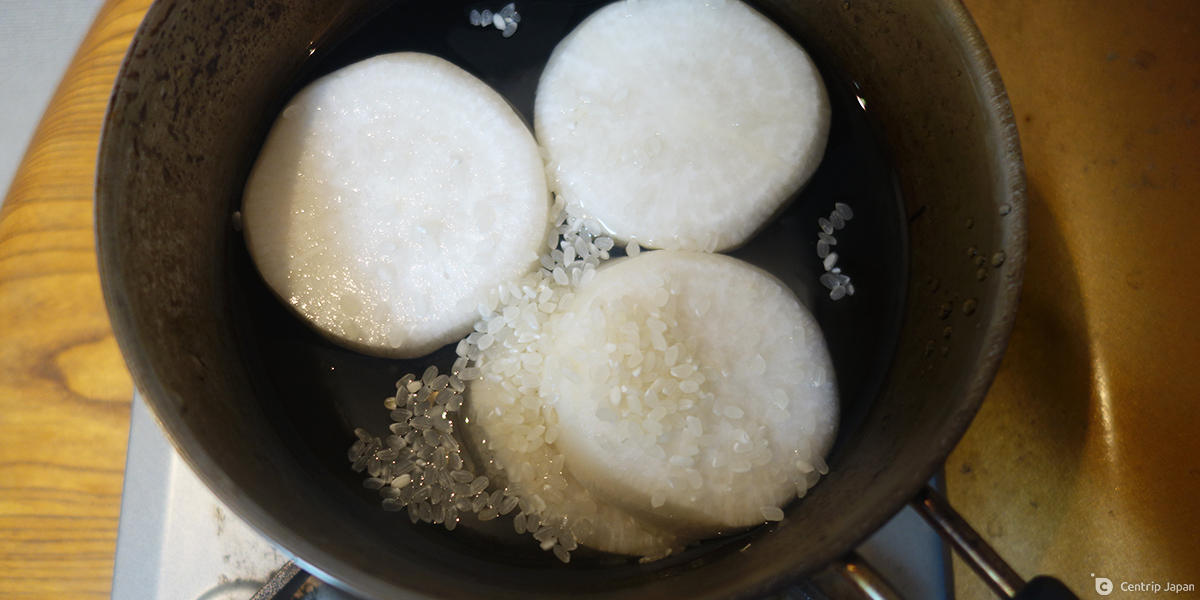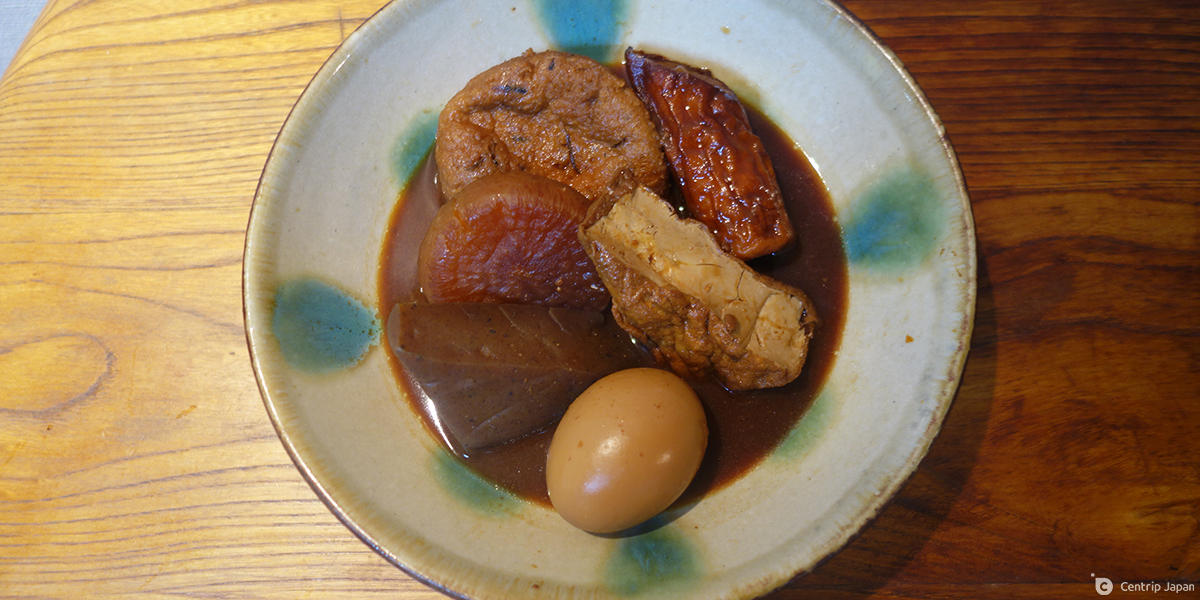|
Centrip Editorial Board
Homemade Nagoya Food: Hatcho Miso Oden

Table of Contents
What is Nagoya Meshi?

Nagoya Meshi are the famous local dishes of Nagoya and its suburbs. Nagoya Meshi includes dishes from Nagoya and the surrounding regions. Some of them are considered B-grade gourmet. B-grade gourmet is a Japanese term that refers to more humble, simple food that is more accessible, but no less delicious, a kind of Japanese-style soul food.
Many of the dishes use fermented bean seasonings that originated in Chubu, such as Hatcho miso and Tamari soy sauce, and they usually have a strong flavor. For example, a pork-cutlet skewer with miso sauce and miso stewed udon.
If you want to cook and enjoy Nagoya Meshi at home, we recommend miso oden a traditional Nagoya Meshi. Miso Oden uses Hatcho miso, unique to this region.
What is Hatcho Miso Oden?


Oden is an everyday Japanese dish. The dashi stock is made from kelp and dried bonito flakes, with various ingredients such as daikon radish, boiled egg, fried tofu, konjac, chikuwa, and fish cakes simmered in the pot. No two oden are the same. Different regions and households use different ingredients in addition to the regular ones. Oden is a dish you can find anywhere in Japan.

Hatcho Miso Oden is popular in Aichi and is unique to the region. Miso tare, a mixture of hatcho miso and some sugar, is mixed with ingredients and then stewed. To make hatcho miso made from soybeans brewed without the use of rice koji (fermented rice culture) or barley koji. Koji is a usual component in miso. Hatcho miso has many characteristics that set it apart from regular miso. It has unique umami and astringent flavor, a by-product of 2 or more years of aging. It also has a reddish-brown appearance, that locals refer to colloquially as kuroi (black). People from other parts of Japan, used to the more common miso flavor of oden, are surprised when they see the black hatcho miso oden in Nagoya!
Hatcho miso is an indispensable part of Hatcho miso oden. Hatcho miso began in Hatchomura, located 870 meters west of Okazaki Castle (Okazaki City, Aichi Prefecture) the birthplace of Ieyasu Tokugawa. Hatchomura was the perfect place for making miso because it was easy to obtain soybeans and salt, the ingredients for miso, and blessed with high-quality natural groundwater. The production of Hatcho miso started in the Edo period, and two miso warehouses remaining from that period are also the two major manufacturers of Hatcho miso today.
Where can I eat Hatcho Miso Oden?

In Nagoya city and its surrounding areas, many restaurants specialize in Hatcho miso oden. In addition to restaurants that specialize in Hatcho miso oden, there are many Izakaya (Japanese-style bars) and diners that serve it as well. At specialty restaurants, you can order it with as many ingredients. If you want to eat Hatcho miso oden, try it with some Nagoya Meishi on the side. We recommend going to an Izakaya and order some chicken wings and miso cutlets on the side.
The center of Nagoya, such as Nagoya Station and Sakae, is filled with many tourists, and those areas have many Izakaya that serve Hatcho miso oden and Nagoya Meishi. For example, Miso Oden from Dote Yakishima Tadashi and Izakaya Daruma, established in the Sakae district in 1948, is famous.
Let's make Hatcho Miso Oden!
Can't make it to Japan? Don't worry, you can make hatcho miso oden at home. Here is the recipe for Hatcho Miso Oden, let's try and make it together!
By definition, Hatcho miso oden is made by boiling bonito flakes and kelp broth, and adding Hatcho miso and some sugar, then simmering with your ingredients of choice. There is one difference in choosing ingredients that sets it apart from the usual Oden. Hatcho miso oden does not contain salted paste products, such as burdock rolls and maruten. But if that is what you like, feel free to throw it in!
Ingredients > Serves 4 to 5 people
Oden Base
・1500cc Dashi stock (kelp and bonito flakes)br>
・150g Haccho miso (about 1/10 of dashi stock)
・75g of Sugar (granulated if possible)
・100cc Sake
・2 pinches of Salt
Oden ingredients

・1/2 Daikon Radish (large)
・4 Eggs
・2 pieces of deep-fried tofu
・1konjac
・4 Ganmodoki (fried beancurd cake)
・4 Chikuwa
The Finishing Touch
・2 tbsp of Mirin
How to make
Preparation

1) Peel the daikon radish and slice it into 2cm thick slices.

2) Fill a pot with water and add a pinch of rice, then boil until the daikon is clear.

3) Boil & peel the eggs.



4) Rub konjac with salt, then boil. Cut in half vertically and diagonally to make into triangles.

5) For deep-fried tofu, rotate while pouring hot water over it to remove excess oil, cool it, and then cut it diagonally to form a triangle.

6) Remove any oil on the ganmodoki and cut the chikuwa to half-length.
Stew

Put the ingredients used in the Oden Base ingredients in a pan and simmer lightly.

Add all the other ingredients except Chikuwa, cover, and simmer on low heat for 1-2 hours.
Add chikuwa and mirin and boil to finish.

Bring to the table and serve while hot.
If you like, we also recommend adding freshly ground pepper for a bit of kick!
Wrap-up

What do you think?
It's a bit of work to prepare the dish, but with careful preparation, you can have a delicious meal. We recommend making it in big batches, as the more you cook, the more flavorful and delicious it becomes. You can also add potatoes, sweet potatoes, grilled tofu, beef tenderloin, fish paste, and anything else your heart desires. So try it out and make your own original Hatcho miso oden!
Click here to get the latest information on Central Japan.Centrip Japan - Nagoya and Chubu Information

